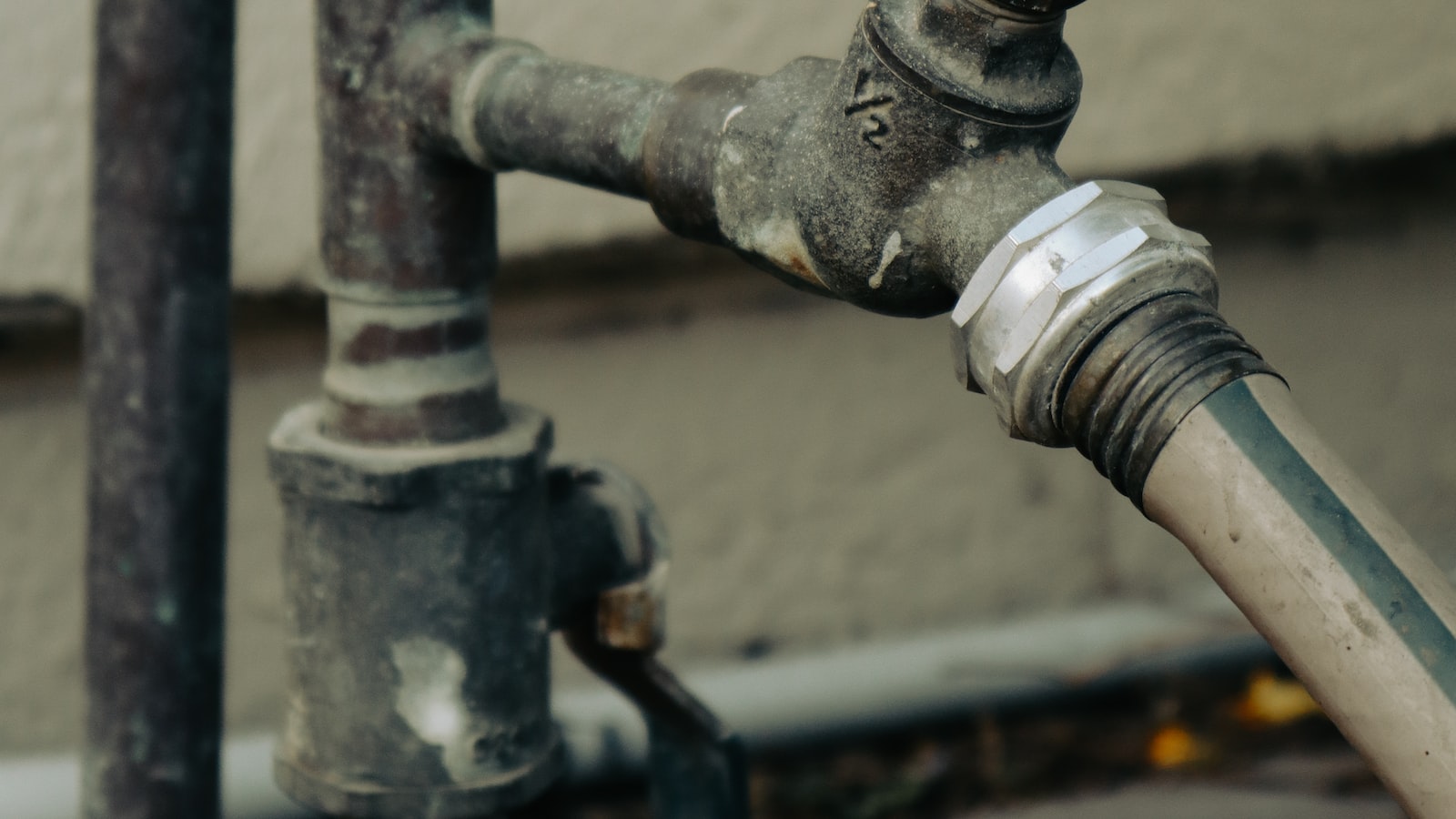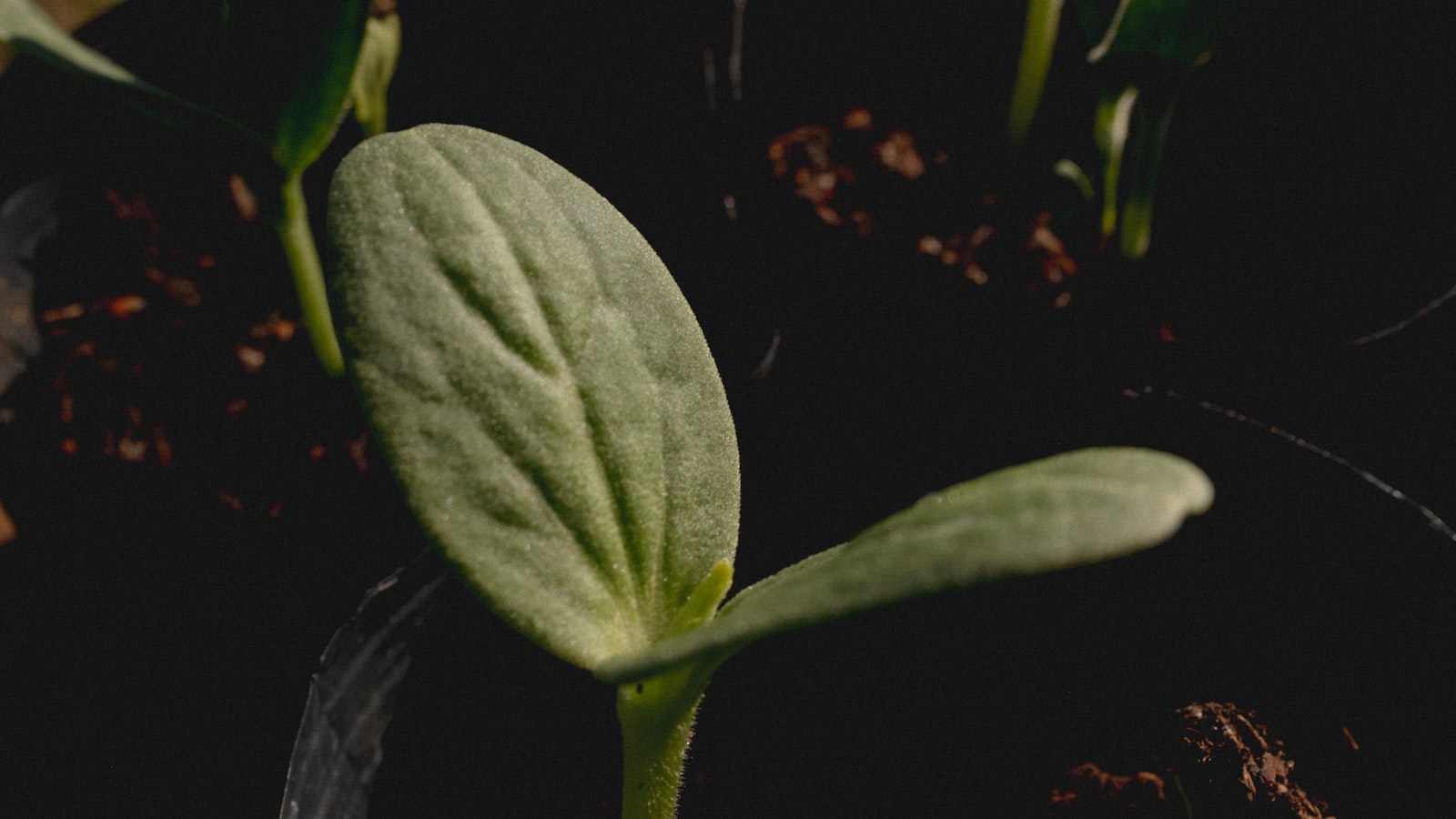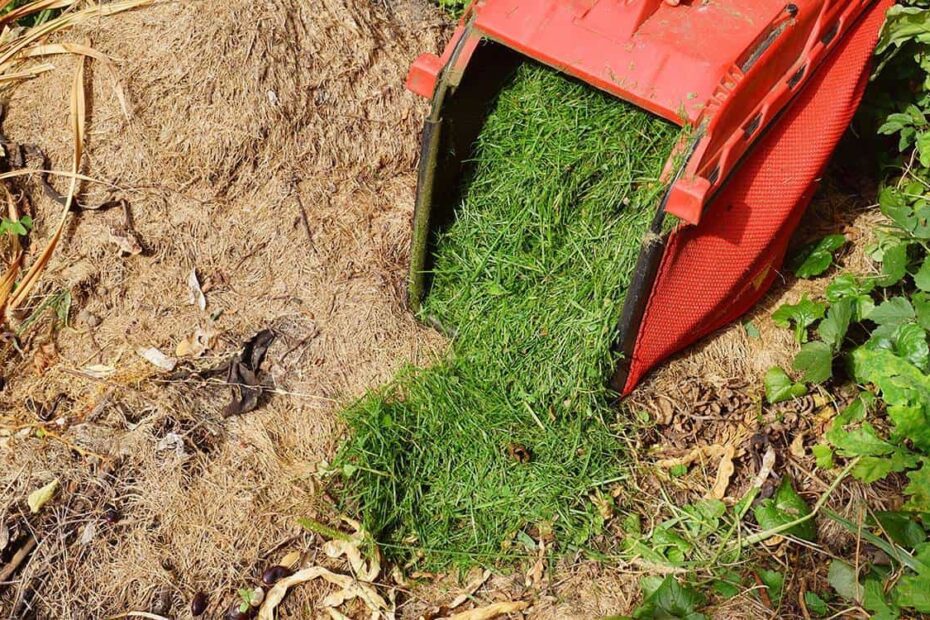Transforming your lawn into a lush, vibrant paradise is a dream we all share. Whether you’re starting from scratch or just looking to enhance your existing grass, the question arises: can you make mother nature a savvy sidekick in your quest for a greener lawn? Picture this: frisky blades of grass, delicately nurtured by the protective embrace of their ancestors. It sounds almost poetic, doesn’t it? Yet, when it comes to the practicality of using grass clippings to cover grass seed, opinions tend to diverge. While some swear by this eco-friendly technique, others remain skeptical, afraid their green dreams may be smothered before they even sprout. In this article, we will delve deep into this horticultural debate, exploring the pros and cons of incorporating this natural alternative into your lawn care regimen. So, loosen your gardening gloves and prepare to embark on a journey where fertilizer meets philosophy, and grass clippings meet grass seed. Let’s uncover the truth, once and for all!
1. A Sustainable Solution: Using Grass Clippings as Mulch for Newly Sown Seeds
Grass clippings, often seen as a hassle after mowing your lawn, can actually serve as a sustainable solution for nurturing newly sown seeds. Instead of discarding these clippings, consider using them as a natural mulch to help your grass seed thrive. Not only does this practice reduce waste, but it also provides a host of benefits for your lawn.
One of the key advantages of using grass clippings as mulch is its ability to retain moisture. By forming a protective layer over the freshly seeded area, it helps to regulate the soil’s moisture levels, preventing evaporation and ensuring a nurturing environment for the seeds. Additionally, this natural mulch acts as a barrier, shielding the seeds from extreme temperatures, wind erosion, and harmful weed growth.
To make the most of using grass clippings as mulch, here are some handy features and tips to consider:
| Features | Tips |
|---|---|
| 1. Organic Nutrients: Grass clippings decompose and release nitrogen, phosphorus, and potassium into the soil, nourishing the seeds naturally. | 1. Proper Mowing: Regularly mowing your lawn and collecting the clippings ensures a fresh and clean supply of mulch for your newly sown seeds. |
| 2. Weed Suppression: Grass clippings form a dense layer that blocks sunlight, minimizing the growth of unwanted weeds around your seeded area. | 2. Light Mulching: Apply a thin layer of grass clippings, about ¼ to ½ inch, to avoid suffocating the seeds and allowing them to germinate successfully. |
| 3. Cost-Effective: Utilizing grass clippings as mulch eliminates the need for expensive commercial alternatives, making it an affordable option for gardeners. | 3. Avoid Chemicals: Ensure the grass clippings are free from pesticides or herbicides, as these can harm the new seeds and hinder their growth. |
By incorporating grass clippings as mulch for newly sown seeds, you not only foster a sustainable approach to lawn care but also create an enriched environment for your grass to flourish. Give it a try, and witness the transformation of your lawn into a vibrant and thriving green oasis!

2. Enhancing Germination and Growth: Benefits of Using Grass Clippings to Cover Grass Seed
Many gardeners and homeowners often wonder if they can use grass clippings to cover grass seed. Well, the answer is yes! Not only can you use grass clippings to cover grass seed, but it also comes with several benefits that can enhance germination and growth. In this post, we will explore the advantages of using grass clippings as a natural mulch for your newly sown grass.
The Benefits of Using Grass Clippings to Cover Grass Seed
1. Moisture Retention: One of the major benefits of using grass clippings as a mulch is that it helps to retain moisture in the soil. This is crucial for seed germination and helps to prevent the seeds from drying out. The grass clippings act as a protective barrier, reducing water evaporation and providing a moist environment for the seeds to grow.
2. Nutrient Boost: Grass clippings also act as a natural fertilizer, releasing valuable nutrients back into the soil as they decompose. This nutrient-rich mulch provides an additional food source for the developing grass seedlings, promoting healthier and faster growth. It saves you the extra cost of purchasing fertilizers and improves the overall condition of your lawn.
| Features | Tips |
|---|---|
| Budget-friendly | Do not use clippings from lawns treated with herbicides or pesticides |
| Organic and sustainable | Spread a thin layer of grass clippings to avoid smothering the seeds |
| Promotes soil health | Apply the clippings after mowing when they are fresh |
In conclusion, utilizing grass clippings as a mulch to cover grass seed can effectively enhance germination and growth. Not only does it provide moisture retention and act as a nutrient boost, but it is also a cost-effective and eco-friendly alternative. However, remember to follow the provided tips and precautions for optimal results. So, next time you mow your lawn and find yourself with a pile of clippings, consider using them to nurture the growth of your new grass!

3. Best Practices for Applying Grass Clippings as Mulch: Dos and Don’ts
Incorporating grass clippings as mulch for your lawn can be a great way to promote healthy growth and conserve water. While it may seem logical to use grass clippings to cover newly seeded areas, there are some important dos and don’ts to keep in mind for optimal results.
DOs:
- Ensure your grass clippings are free from weed seeds and chemicals. It is crucial to mow your lawn regularly, allowing the clippings to dry out before collecting them for use as mulch. This helps prevent the spread of weeds and ensures a clean, chemical-free mulching material.
- Apply a thin layer of grass clippings over newly seeded areas. This acts as a protective blanket, increasing moisture retention and providing insulation from extreme temperatures. The clippings also act as a natural fertilizer, enriching the soil with essential nutrients as they decompose.
- Incorporate the grass clippings into your lawn gradually. This prevents excessive thatch buildup and allows for proper oxygenation and nutrient absorption. Use a rake or a garden fork to lightly work the clippings into the soil. This aids in breaking them down faster and reduces the risk of matting.
DON’Ts:
- Avoid using fresh, wet grass clippings as mulch. Fresh clippings can clump together, creating a barrier that inhibits air and water circulation. Instead, dry the clippings thoroughly before applying them, allowing for better coverage and decomposition.
- Do not apply too thick of a layer of grass clippings. This can suffocate your newly seeded grass and create a favorable environment for disease and mold growth. Aim for a thickness of no more than half an inch to allow sunlight to reach the young grass and promote healthy growth.
- Refrain from using grass clippings that have been treated with herbicides or pesticides. These chemicals can harm your new grass seedlings and potentially contaminate the soil. Make sure the clippings you use are from an untreated, organic lawn to ensure the best results.
Features/Tips Table:
| Features/Tips | |
|---|---|
| 1. | Ensure clippings are free from weeds and chemicals |
| 2. | Apply a thin layer over newly seeded areas |
| 3. | Incorporate clippings into the soil gradually |
By following these best practices and paying attention to the dos and don’ts of applying grass clippings as mulch, you can effectively utilize this natural resource to enhance the growth of your lawn. Remember, a little goes a long way, so use grass clippings wisely and watch your grass transform into a healthy, lush carpet.
4. Alternatives to Grass Clippings: Exploring Other Seed Covering Options
Grass clippings are a common and seemingly convenient choice for covering grass seed, but are there alternatives worth exploring? Let’s dive into some intriguing options to consider for your next landscaping project.
-
Organic Mulch: One alternative is to use organic mulch, such as straw or wood chips, to cover your grass seed. This can help retain moisture, prevent erosion, and provide insulation for the seeds. Plus, organic mulch eventually breaks down and adds nutrients to the soil, promoting healthy growth. Be sure to spread the mulch evenly and avoid piling it too thickly, as this can suffocate the seeds.
-
Seed Mats or Blankets: Seed mats or blankets are pre-seeded mats made of a biodegradable material that provide an even distribution of seeds. They are simply laid over the designated area and secured with landscaping staples. This option saves you time and effort, ensuring consistent coverage and reducing the risk of seed displacement. However, keep in mind that seed mats may be more expensive than other alternatives.
In your quest to find the perfect seed covering option, don’t forget to consider the specific needs of your lawn. Factors such as climate, soil type, and the desired outcome should all be taken into account. The table below provides a quick overview of features and tips for each alternative:
| Seed Covering Option | Features | Tips |
|---|---|---|
| Grass Clippings |
|
|
| Organic Mulch |
|
|
| Seed Mats or Blankets |
|
|
Remember, the aesthetics and effectiveness of your seed covering choice can greatly impact the success of your lawn. So, explore these alternatives, weigh the pros and cons, and choose the option that best suits your needs and preferences. Happy seeding!
Frequently Asked Questions
Q: Can you use grass clippings to cover grass seed?
A: The Magical Marriage of Mowing and Seeding!
Q: The quest to create an enchanting lawn continues, but can grass clippings play a role in nurturing our newly sown grass seed?
A: Embark on this whimsical journey as we explore the synergy between grass clippings and grass seed.
Q: So, is it possible to use grass clippings as a magical blanket to protect and nurture our freshly laid grass seed?
A: Let the curtain rise as we uncover the mysteries behind using grass clippings for a spectacular seed cover. As we conclude this verdant journey, we have unveiled the hidden secrets that lie within our very own lawns. Through the ages, we have sought ways to coax the greenest, lushest grass to flourish beneath our footsteps. And in this quest for horticultural enlightenment, we stumbled upon a fascinating question: can you use grass clippings to cover grass seed?
Our exploration has revealed a fascinating paradox encompassing the circle of life within our gardens. The very clippings that were once shorn from the earthy carpet can now play an unexpected role in nurturing new life. Though seemingly counterintuitive, this method invites us to rethink the conventional wisdom of disposing of clippings as mere garden waste.
This innovative practice of using grass clippings to cover grass seed acts as an organic shield, offering a nurturing embrace to those delicate seeds yearning to sprout. As nature’s humble blanket, the clippings provide vital insulation, conserving moisture while guarding against the harsh glare of the sun. They also act as a nutritional feast, gradually decomposing and releasing essential nutrients back into the soil, fueling the rejuvenation of the next generation.
Yet, we must approach this practice with caution, for the realm of gardening teems with intricate nuances. Proper technique is vital to ensure the success of this green synergy. It is crucial to mow your lawn with a high-quality mulching mower, allowing the clippings to be uniformly minced and gently scattered across the seedbed. This ritual, performed with care, ensures an even distribution, preventing smothering and clumping while laying the foundation for a thriving, harmonious tapestry of freshly grown blades.
While some detractors voice concerns over potential weed encroachment or disease transmission, diligent maintenance and following established best practices can mitigate these risks, serving as a trustworthy shield against adversity. With prudent choices and vigilant upkeep, the grass clippings forge an alliance with the grass seed, orchestrating a symphony of life as our lawns unveil their emerald splendor.
So, dear readers, as we conclude this captivating chapter of our gardening odyssey, let the notion of using grass clippings to cover grass seed permeate your horticultural musings. Experiment with this age-old wisdom, intertwine it with your gardening practices, and witness the resplendent transformation that awaits your humble patch of land. In nature’s symphony, every note has its place, and every question holds a promise of discovery.
- When to Put Weed and Feed on Lawn in Michigan - October 16, 2023
- When to Fertilize Potatoes Plants - October 16, 2023
- Can You Plant Clover in the Spring - October 16, 2023
Contents
- 1 1. A Sustainable Solution: Using Grass Clippings as Mulch for Newly Sown Seeds
- 2 2. Enhancing Germination and Growth: Benefits of Using Grass Clippings to Cover Grass Seed
- 3 3. Best Practices for Applying Grass Clippings as Mulch: Dos and Don’ts
- 4 4. Alternatives to Grass Clippings: Exploring Other Seed Covering Options
- 5 Frequently Asked Questions

